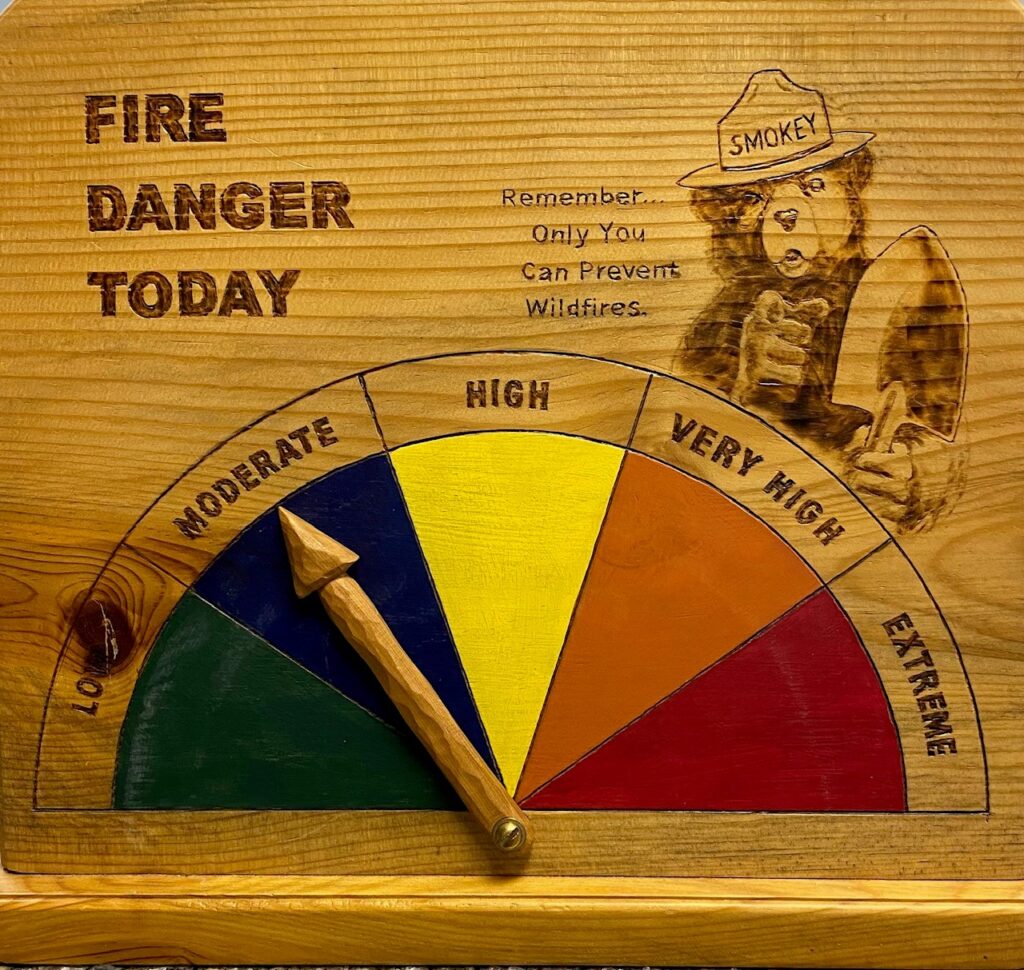How do Fire Professionals decide Fire Danger?
Springerville, AZ, June 5, 2023 — Visitors to the National Forests notice the “Fire Danger Smokey Bear” signage found on the Forest. These signs indicate fire danger and have an arrow that points to one of five different ratings that range from Low to Extreme fire danger. But how do fire professionals decide?
A primary measure includes the Energy Release Component (ERC) which is a number related to the available energy (BTU) per unit area in front of a fire, or otherwise stated “how hot” is the fire burning. As live fuels cure and dead fuels dry, the ERC will increase and can be described as a build-up index, as it shows an annual progression.
The ERC is utilized by fire managers to analyze current fire danger in comparison with historical average and high fire danger years. The ERC is reported as a percentile, with the 90th percentile being a typical benchmark for high to very high fire danger, and the 97th percentile correlating to extreme fire danger.
Fire professionals use the ERCs and correlate them to the ratings and different colors on the fire danger Smokey Bear signs.
Low (L) fire danger indicates very little danger of fire, is usually in cool &/or wet conditions, and a dark green on the indicator wheel.
Moderate (M) ratings are seen when fire may start but they are unlikely to become serious and control is relatively easy for firefighters. Moderate is seen as either light green or blue on the indicator wheel.
High (H) ratings mean that fine, dead fuels ignite easily from most causes. Fires may become serious and control may be difficult unless they firefighters and attack successfully while the fire is small. High is seen as yellow on the indicator wheel.
Very High, (VH) means that fires start easily from all causes, spread rapidly and quickly increase in intensity, and may develop fire whirlwinds in heavier fuels. Very High is seen as bright orange on the wheel.
Extreme (E) means that fires start quickly, spread furiously and burn with high intensity. Fires quickly become unmanageable, fast moving and pose serious danger to any structure, persons or items in its path. Firefighting is difficult and control actions are only safely effective on the flanks of the fire until the weather changes or the fuel supply lessens. Extreme is a very bright red on the wheel.
Currently four Ranger Districts, including Alpine, Springerville, Lakeside and Black Mesa are at Moderate fire danger levels. The most southern portion of the Forest, the Clifton Ranger District is in High fire danger. The A-S has enjoyed a non-typical cool and wet spring, leaving fire managers several opportunities to implement prescribed fire or allow natural ignition to play a role in clearing hazardous fuels across the forest during these favorable conditions.
Fire managers will continue seeking opportunities to use prescribed fire or natural ignition, such as lightning to reduce hazardous fuels across the National Forests. As always, please feel free to contact local Forest Service offices at any time and for any questions.
Please follow us on Twitter @A_SNFs, on facebook.com/apachesitgreavesnfs, and on our website, https://www.fs.usda.gov/asnf.

